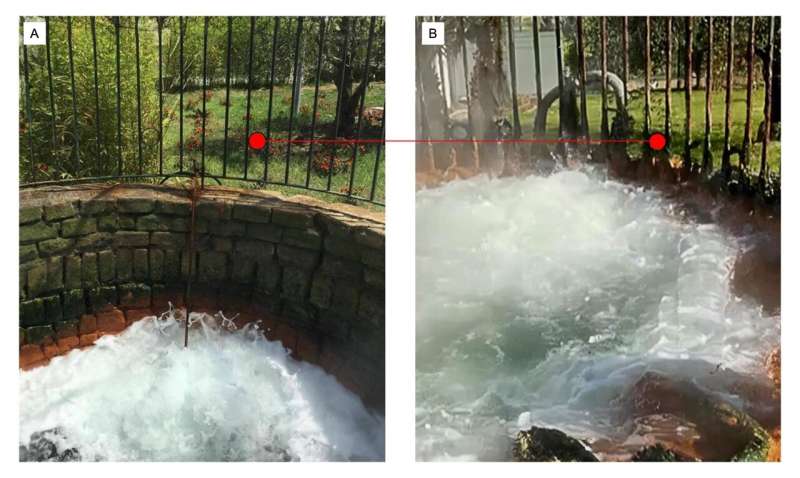
Welcome to the breathtaking world of Campi Flegrei, a volcanic wonderland in southern Italy! Recent scientific discoveries reveal a glimmer of hope for the community living above this vibrant but volatile landscape. Researchers have unveiled innovative strategies to manage the geological forces at play, potentially reducing seismic unrest and ensuring safety for those who call this area home.
In the heart of southern Italy, residents of Pozzuoli have been living in a state of heightened alert as swarms of earthquakes have rocked the region since 2022. Nestled atop the Campi Flegrei volcanic area, this bustling community faces the challenges of constant land movement—a startling phenomenon that can lead to significant upheaval.
But rather than merely worrying about disaster responses and evacuation protocols, researchers at Stanford University have embarked on a mission to find ways to mitigate this seismic activity. They propose a simple yet effective strategy: manage the water runoff and groundwater levels to ease the pressure within the geothermal reservoir. This creative approach could help stave off earthquakes by balancing the natural forces at play.
Through rigorous subsurface imaging and lab experiments, these scientists have uncovered an interesting fact: high pressure from water and steam in the reservoir triggers the earthquakes when a caprock seals it off. The researchers discovered that past episodes of unrest, such as those in the early 1980s and more recently over the past 15 years, can be linked to this pressure build-up.
Interestingly, this challenges the conventional belief that magma movements are to blame for the seismicity. It turns out that not only does the water recharge the geothermal reservoir, but it also influences the land’s deformation and seismic activity. “We can tackle this issue by managing surface water and possibly strategically withdrawing fluids from wells,” explains Tiziana Vanorio, a senior contributor to the research.
The Living Land
The Campi Flegrei caldera is no ordinary landscape. At about eight miles wide, it’s a massive depression formed over thousands of years due to monumental eruptions. The region experiences gradual uplift and subsidence, causing the ground to seemingly “breathe.” In this vibrant ecosystem, land can rise or fall dramatically, transforming the daily lives of local residents.
For years, local folks have admired the area’s unique features, including the telling rumblings that suggest steam-driven explosions—an effect from rapidly vaporizing water during the seismic shakes. Pozzuoli’s dynamics first gained global attention in the 1980s, when land uplift and earthquakes forced the evacuation of about 40,000 residents.
As Vanorio recalls, it was a frightening time for her and many others from her hometown. “It’s been tough for the past three years. The continuous shaking has damaged many buildings, leaving some without homes.” But the spirit of the community remains strong, with residents looking for solutions to ensure their safety.
A New Approach
To comprehend the situation, researchers closely analyzed various patterns in subsurface structures and earthquake activity. They found that significant similarities exist even between unrest periods decades apart, highlighting a cyclical pattern driven by similar causes.
This study suggests a merging of past geological insights with contemporary science, leading to a fresh perspective on how groundwater influences seismic activity. By monitoring changes in rainfall and the subsequent pressure changes in the geothermal reservoir, scientists want to create a proactive system for managing seismic risks.
“We need to keep a keen eye on groundwater levels and ensure that water is managed effectively,” Vanorio asserts. Researchers have even experimented with innovative lab setups, mimicking the behavior of the geothermal system using common household tools like a moka pot, demonstrating the intricate relationship between pressure and rock sealing.
What Lies Ahead
Now that this crucial information has come to light, the researchers are passionate about sharing their findings with local authorities. “It’s like a perfect storm of geology,” Vanorio summarizes. “You have molten magma, fluid in the geothermal reservoir, and the caprock sealing it all in. While we can’t control the magma, we can influence the fluid.” By actively managing this fluid, they hope to implement a preventative approach to avoid seismic unrest.
In a place where nature sometimes feels chaotic, there’s a sense of hope and determination among both scientists and the local community. With newfound knowledge and innovative strategies at hand, it’s possible to navigate these geological challenges and pave the way for a safer future for the people of Pozzuoli.
If you would like to see similar science posts like this, click here & share this article with your friends!

